Have you ever wondered if you need a style guide for your small business? Well, ask yourself this – do I have a brand that includes a logo or various versions? Do I consistently use certain colours for specific purposes? Are there words that I prefer to use and other words that are a no-go zone? Chances are, you need a style guide.
At the heart of every great brand is consistency. It’s the cornerstone to brand credibility and can be just as important as having a great product or excellent service. As your business grows, the style guide becomes more and more important because the bigger the business gets, the more people are responsible for the brand message – and the more room for error there is.
A style guide is the blueprint for your business and what it represents. It is the one source of truth in your business when it comes to the treatment of your brand and all associated collateral.
What To Include In Your Style Guide
Your style guide is the one central place where all of your team members can reference if in doubt when creating ads, brochures, websites, TV commercials, flyers or booklets. In your style guide, you should include clear outlines of the following:
- Brand messages
- Brand colours (in Pantone, RGB and CMYK)
- Brand logo treatment (include various versions such as vertical, horizontal, black and white)
- Typography
- Tone of voice
- Brand messages
- Brand shapes
- Brand products including when and where to use them
- Brand values
Internal presentation documents (including letter heads, email signatures, pitch documents and invoices).
Depending on your business needs, you may also be given rules for presenting your logo in a host of other mediums such as uniforms, vehicles, promotional items and interior design.
No matter the size of your company, all businesses require a style guide to ensure consistency and professionalism in all of the work they deliver. By creating uniformity within your brand, you create a stronger framework for identifying what your business stands for and believes in. It is the place to bring all of your ideas together.
To get you started, let’s look at some of the best brand style guides published by global companies.
Skype Style Guide
Skype’s style guide personifies the communications brand by simply outlining their tone of voice, colour options and typography in a clean and easy to read document. The brand lives up to it’s values and walks the walk by avoiding industry jargon, injecting humour and delivering consistency of visual elements and the correct places to use them.

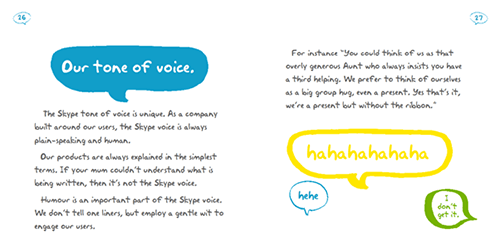
Twitter’s Style Guide
Twitter’s style guide is for both employees and external users of the logo and brand. Twitter has made the brand assets and guidelines available on their website to allow others to correctly use the brand when referencing it. Twitter’s style guide is simple and straightforward, clearly identifying the dos and dont’s of brand use.
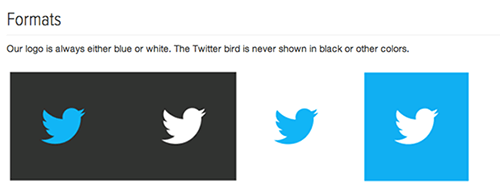
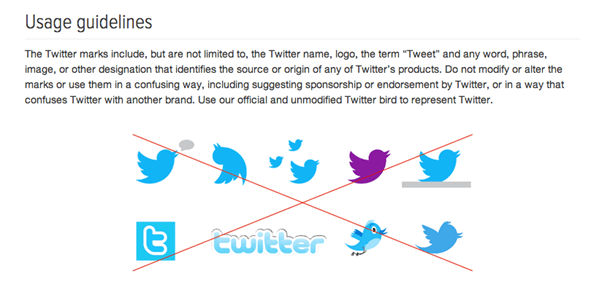
Adobe’s Style Guide
Adobe’s style guide is incredibly comprehensive and professional. Outlining details on every piece of business asset from tone of voice to stationery, Adobe has it all covered. There is very little room for error with a style guide like this and it allows for independent work as there is no confusion or question over which logo to use and where.
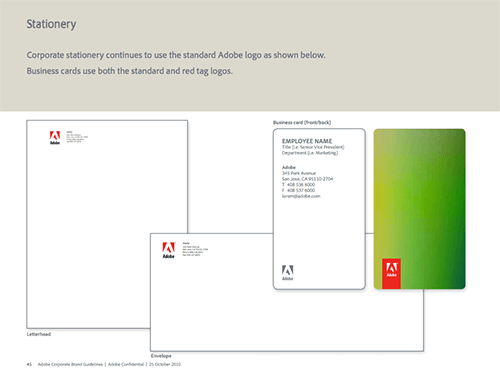
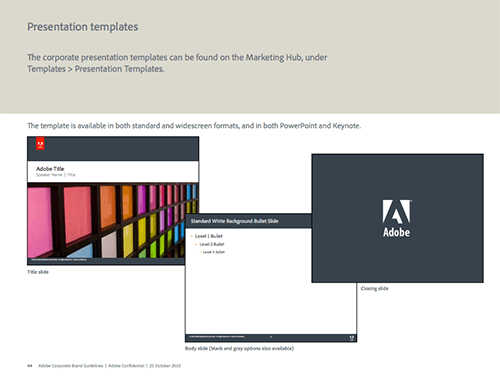
Heineken Style Guide
Heineken’s style guide has covered every touch point and how the typography is used in each medium. From print and editorial to digital platforms, Heineken has outlined exactly how their brand typeface should look across all mediums.

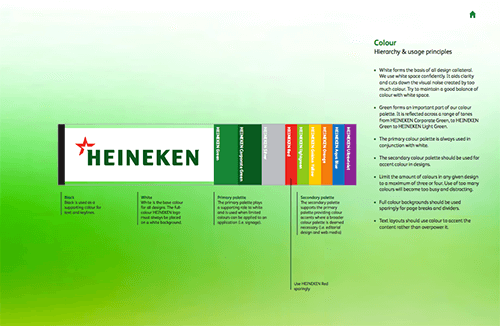
Your style guide can be as small or as big as needed, it’s up to you and your business requirements. Start simple and outline the critical elements of your brand first and take inspiration from the pages of these world renowned brands.
Ready to create your own style guide?
If you’re like a lot of business owners, then you have a fairly good idea about which designs you like the look of. But you might not be sure of the steps needed to get a unique brand identity for your own business.
One of the best ways to hone your ideas is to fill out a design brief that covers the challenges and opportunities your business faces, as well as the mechanics of how you plan to use your brand identity. This information is also useful for setting the rules in your style guide.
For an easy-to-follow interactive design brief download our design brief template.
Need help designing your style guide? Simply, request a quote and our friendly team will be in touch.
Please note – article originally published in 2014. Some of the above style guides may have been updated since that time.


